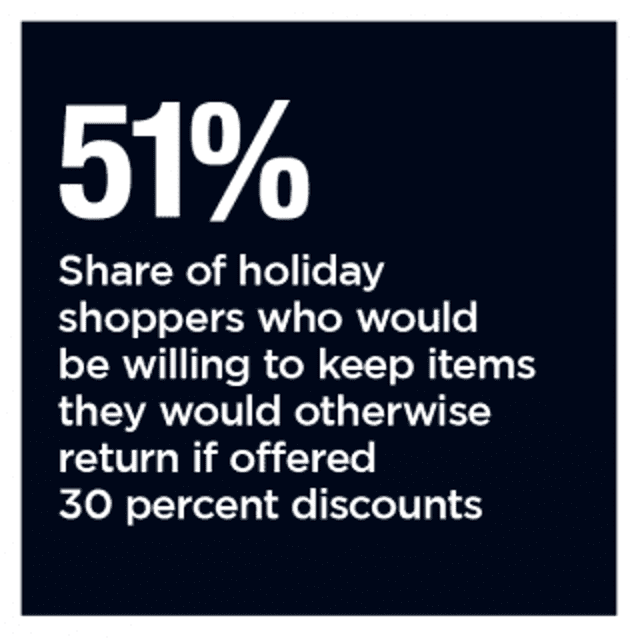Retailers Test Discounting, No-Return Policies to Keep Goods With Consumers

Like clockwork or the rising sun, each new year in the retail industry also reliably brings with it a flurry of January White Sales, spawned from the hopeful, festive loins of Black Friday.
As much as retailers and consumers alike expect and prepare for this annual pageant of price reductions and seasonal inventory clearance sales, the process — and the calculus that drives it — is undergoing a rethink alongside the digital revamps that are roiling the industry itself.
Specifically, this year’s effort seems geared toward finding the perfect percentage needed to keep merchandise moving out of congested warehouses and the backs of stores and keeping it in the hands of consumers instead.
Increasingly, the cop, so to speak, that is now overseeing this one-way street of commerce is the “no return” policy, and variable discounting is its deputy.
Make It Go Away
While a surge of post-holiday returns is certainly not a new phenomenon, the current scale of the process and problem is unprecedented, as increased eCommerce usage has brought this challenging by-product along with it. With low priced items or bulky goods, some retailers simply tell customers to keep their unwanted purchases as the expense of shipping, processing, inspecting and restocking goods is greater than the cost of the item itself. It is an unfortunate, but fiscally justifiable cost of doing business.
However, for the array of other stuff — particularly apparel — that is looking to be brought back, retailers are highly incentivized to find “the number,” in terms of a percentage discount, that it will take to have hesitant customers change their minds and agree to keep an item they planned on returning.
Likewise, on clearance merchandise, retailers have typically deployed a “no return,” “all sales final” or “store credit only” policy to help aid in the closing of books. But now, those same tactics are being paired with varying degrees of discounts and applied storewide to merchandise that would normally be full priced, with stores showing a willingness to take a bit less in exchange for the comfort of knowing those sweaters, slacks, swimsuits or shoes are never coming back.
What’s Your Number?
Compared to the “just keep it” or dumpster model that many deluged merchants resort to, PYMNTS data and market analysis have shown that many consumers can be incentivized to change their minds with fairly little money — or at least far less than 100%.

Although the estimated $70 billion returns problem has worsened alongside the general rise in eCommerce, a 2021 PYMNTS Online Ordering’s Return Round Trip report found that roughly half of consumers could be enticed to change their minds for 30%, and 45% would do so for just 10%.
Against this backdrop, it is unsurprising to see retailers, including J.Crew and Everlane, sidestepping the haggling processing and front-running this idea by offering discounts upfront as long as customers are willing to waive their right to request a return.
To be sure, managing and limiting returns is only one part of the retail customer experience, and as the research shows, works only as well as the underlying payments systems and (usually free) shipping offers that support them.
Get the report: Online Ordering’s Return Round Trip
